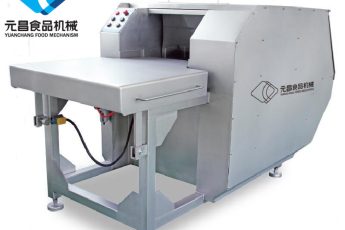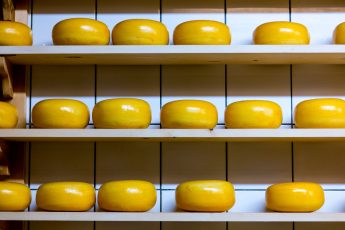How to Choose the Best Commercial Bread Slicer
A commercial bread slicer will save you time and energy while boosting profits. These machines are available as countertop or floor models, so you can choose the one that suits your needs. You’ll find that there are many features to choose from, including speed settings, bread cutting capacity, and the size of the slicer blades. This article will help you find the perfect Commercial Bread Slicer. Read on to learn more about the pros and cons of each model.

Electric bread slicers
An electric commercial bread slicer is a great tool to use when slicing bread, but you may be wondering how to choose the best one. You can choose from a variety of types and features, depending on your needs and budget. One type is the Omega One Electric Bread Slicer. This model is extremely efficient and requires little counter space. It is suitable for a bakery, deli, hotel, or various types of food service operations.
The basic electric bread slicer consists of a series of metal blades lined up in a row. These blades are partially serrated to prevent over-pressure from soft bread and allow for even slices at high speeds. A bread slicer with a serrated blade is a great option for slicing specialty breads. You can choose between non-serrated and serrated blades to suit your needs.
An electric commercial bread slicer is essential for the uniformity of sliced bread. Using a manual slicer can be very time-consuming and can ruin a perfectly good loaf of bread. An electric bread slicer offers a fast and convenient solution for these tasks, allowing you to focus on other aspects of your business. These bread slicers are easy to use and can easily cut up to 1,000 loaves per hour.
Band slicers
There are many benefits of using a commercial bread slicer. One of these benefits is that you can easily change the blades and set different thicknesses. Band slicers allow you to change the thickness manually, but reciprocating slicers require a significant amount of time. Inconsistencies in thickness can be costly. Inconsistent thicknesses also affect the quality of your products. An automated slicer reduces the chances of problems by eliminating human error.
The blades of band slicers are very durable. This machine can slice up to 2000 loaves per hour. Some band slicers can even produce different thicknesses, depending on the type of bread. A constant slice width is also essential for the knives to guide correctly. Some of these machines also have a clipping or bagging station. Upper and bottom belts feed the product. The belt speed is controlled by an inverter. Synchronization systems allow loaves to be moved from one section to another in an organized manner.
Blade sanitation processes vary from bakery to bakery. Some clean them in place, while others clean them in another room. Others clean the blades until they fail, which is not ideal. In general, a blade will last approximately three to four days on a high-output line. Cleaning the blades can be as simple as scraping them and blowing them with hot water. The blades are sharp, and any crumbs that collect on them can disrupt the bread slicer’s operation.
Reciprocal slicers
Reciprocating slicers are useful tools used in bakery production. They prevent the sliced bread from slipping out of the blades and prevent the sliced items from damaging the other pieces. They also produce even and smooth slices. The Hartmann brand can slice up to 20,000 loaves per hour and 70,000 burger buns per hour. This machine is designed to cut all types of bread, including whole wheat and multigrain.
A reciprocal slicer uses a lever-type mechanism to push a loaf through the blades. The pusher mechanism comprises a pushing element 110 and a handle 160 that pivots around a pivot point 170 on the housing. The pusher mechanism is balanced over the pivot point to minimize the operator’s effort. When the slicer is fully loaded, the guard returns to its loading position.
The band slicer is one of the most popular types of bread slicer. It is equipped with a retractable safety guard. The operator puts a loaf in the slicer, and it advances down an inclined path. The slicer includes cutting blades, and a guard (30) is mounted relative to it. As the bread slices advance, the guard moves to a lower position. This prevents any possible exposure to the cutting blades.
Proper care is essential for any slicer. A proper maintenance routine focuses on clearing debris, replacing worn blades, and replacing the machine when necessary. The maintenance routine of a slicer is critical since bread crumbs can disrupt its function. The best time to replace the blade is after about two months. When the blades are worn down, the maintenance can be accomplished by wiping down the slicer and air-blowing the machine to eliminate any remaining crumb buildup.
Freestanding bread slicers
Among the different commercial bread slicers available in the market, the CUSIMAX food slicer has some unique features that set it apart from its competitors. Its hidden track design and dishwasher-safe parts allow for easy cleaning and maintenance. Its belt drive structure reduces the need for lubricant and is more reliable than gear drives. Its compact size makes it easy to move and store. It also features a removable blade for easy cleaning.
There are two types of commercial bread slicers, namely, the countertop and the freestanding variety. Countertop bread slicers are great for operations with limited floor space. These machines are typically made of stainless steel and come with safety systems. Countertop bread slicers are more durable than freestanding versions and also include a crumb tray and bagging device. Some models have casters for easy mobility. They also have locks for added stability.
Commercial bread slicers can make quick work of slicing breads. The best ones will produce perfect slices and are simple to operate. This equipment will make the job easier for your staff. It is also designed to slic bread quickly, making it ideal for busy bakeries with a high turnover of workers. A commercial bread slicer can cut different types of bread in the bakery. Moreover, it can be operated by any staff member and is extremely easy to maintain.
Maintenance of bread slicers
Proper maintenance of commercial bread slicers is important for both food safety and machine efficiency. Cleaning the slicer regularly is critical to reducing cross-contamination and bacterial development. Before cleaning the bread slicer, it is necessary to read the manufacturer’s instructions to ensure safety. It is also a good idea to wear gloves and unplug it from the power source. To clean the blades, use a sanitizer. After cleaning, rinse with hot water to rinse away any sanitizer.
Clean the blades daily. While the blades themselves need to be cleaned periodically, the tank must be wiped down daily. This ensures the bread slicer continues to perform optimally. Cleaning the knives daily is particularly important as skipping daily maintenance can negatively impact the machine’s performance. Therefore, it is recommended that all bread slicers be thoroughly cleaned regularly. If you are using a commercial bread slicer for a commercial bakery, you must understand how to maintain it properly.
Cleaning the commercial bread slicer is easy and straightforward. To clean the slicer, you should first read the manual provided by the manufacturer and make sure you follow all the steps properly. To clean the slicer, lift the main slicer plate, blade plate, and guard plate. You can then rinse and clean the slicer according to the manufacturer’s instructions. Always remember to put on gloves before cleaning, because bacteria and fungi can thrive in rusty slicer parts.
Cost of bread slicers
A commercial bread slicer has several advantages. A commercial slicer is easy to operate and is versatile enough to handle a variety of different types of bread. In addition to slicing bread, these machines can also cut various types of vegetables and fruit, including cucumber, tomato, and loaf food. This type of bread slicer is ideal for many types of businesses, including supermarkets, milk tea shops, and processing plants. In addition, it is convenient to use because it has handles on both sides and is relatively easy to transport from one location to another.
A commercial bread slicer can cut a variety of bread types, including bagels, English muffins, and sponge cakes. Commercial slicers come in different sizes and configurations to meet the needs of different businesses. Some commercial bread slicers are designed to cut bagels and English muffins horizontally. For more versatile uses, consider a countertop bread slicer. The countertop variety is easy to move and can be mounted on a countertop, and floor models are suitable for a commercial bakery.
The growing awareness of healthy ingredients is another factor expected to drive demand for commercial bread slicers. A growing awareness of healthy ingredients is compelling users to seek out bread that contains healthy ingredients. Furthermore, a professional-grade bread slicer is capable of generating dozens of slices per minute. A commercial bread slicer can cut bread faster, resulting in greater efficiency and savings in the kitchen. This slicer also reduces the time required to cut bread by hand.








